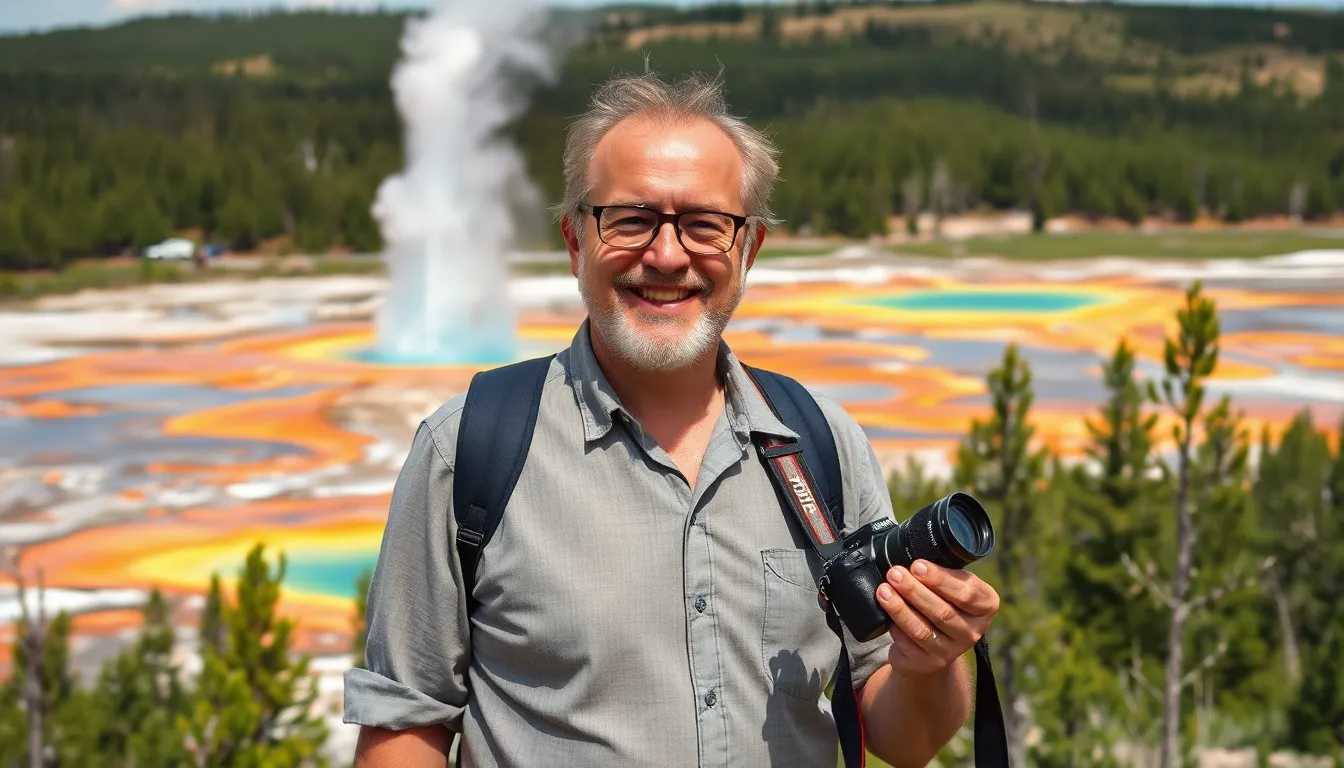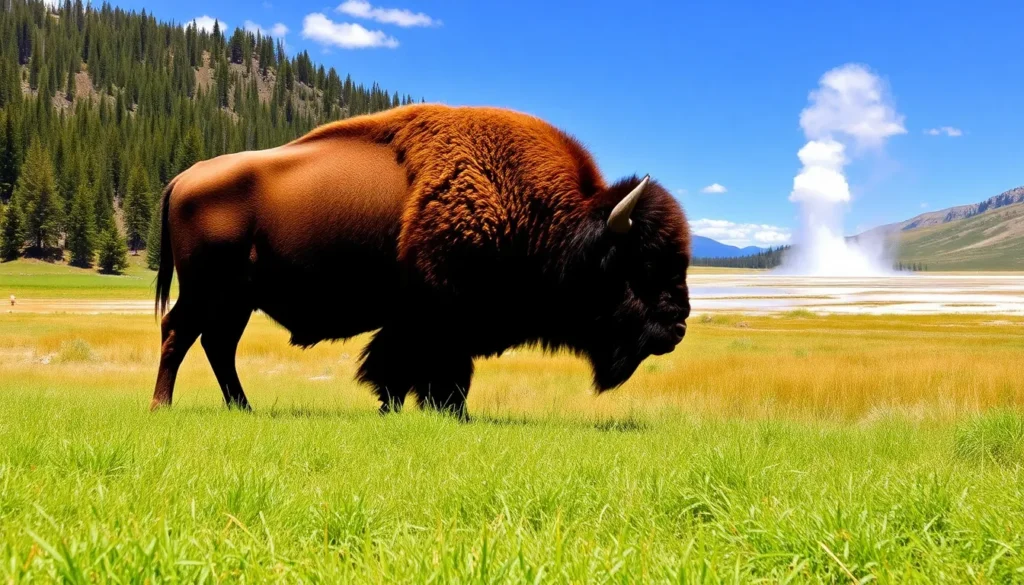Yellowstone National Park, with its stunning landscapes and bubbling geysers, is a paradise for nature lovers. But recently, it’s found itself in the spotlight for a rather unusual reason: the ban of Joseph Aita. Yes, you read that right! It seems even the great outdoors has its share of drama, and this one’s got more twists than Old Faithful’s eruptions.
Before you grab your popcorn, let’s dive into the story behind this unexpected ban. Was it a case of too much enthusiasm for wildlife selfies or perhaps a misunderstanding involving a bison? Whatever the reason, it highlights the importance of respecting nature’s rules. So buckle up as we explore the amusing yet serious implications of this ban in the heart of America’s first national park.
Table of Contents
ToggleOverview of Yellowstone National Park
Yellowstone National Park, established in 1872, represents America’s first national park. Visitors experience a diverse ecosystem that includes stunning landscapes, rich wildlife, and geothermal wonders. The park spans over 3,400 square miles across Wyoming, Montana, and Idaho. Each year, nearly four million people explore its attractions, such as Old Faithful and the Grand Prismatic Spring.
Geothermal features dominate Yellowstone’s landscape. About 10,000 geothermal structures exist, including more than 500 geysers and hot springs. These elements result from volcanic activity beneath the surface. Respecting these natural wonders is vital for preserving the park’s integrity.
Wildlife thrives throughout Yellowstone. The park is home to over 67 species of mammals, including bison, elk, and wolves. These animals play a crucial role in maintaining the ecological balance. Observing wildlife can be a rewarding experience, though keeping a safe distance is essential for safety and conservation.
The park’s weather varies by season, with summer temperatures averaging 70°F and winter temperatures plunging to below 0°F. Each season offers unique opportunities for outdoor activities, from hiking and camping to snowshoeing and cross-country skiing. Understanding seasonal variations helps visitors plan their trips effectively.
To protect its natural beauty, Yellowstone has regulations in place. These guidelines ensure visitor safety and the well-being of wildlife. Engaging in activities that demonstrate respect for nature promotes a sustainable outdoor experience.
Overall, Yellowstone National Park remains a breathtaking destination. Its combination of natural beauty, diverse wildlife, and geothermal wonders make it a vital location for conservation and exploration.
Background on Joseph Aita

Joseph Aita gained attention following his ban from Yellowstone National Park. His actions stirred discussions about the balance between enthusiasm for nature and compliance with park regulations.
Early Life and Career
Joseph Aita grew up with a strong connection to the outdoors. His early experiences in nature sparked a passion for wildlife photography. Aita honed his skills over the years, capturing stunning images that reflect the beauty of various landscapes. Before his notoriety, he worked in different fields, including environmental education. His background positioned him as a knowledgeable advocate for conservation, which made his later conduct within the park all the more surprising.
Contributions to Yellowstone
Aita’s photography showcased Yellowstone’s remarkable features and wildlife. His work highlighted the park’s geothermal wonders, such as Old Faithful and vibrant hot springs. Additionally, he aimed to educate viewers about the importance of wildlife preservation. Through social media, he focused on raising awareness about the ecological significance of bison and other native species. His efforts initially contributed positively to the park’s outreach, promoting responsible tourism and appreciation for natural beauty.
Reasons for the Ban
Joseph Aita’s ban from Yellowstone National Park stems from specific actions and their implications for the environment. These factors highlight the importance of maintaining a delicate balance between enthusiasm for wildlife photography and adhering to park regulations.
Controversial Actions
Aita’s behavior involved closely approaching bison, compromising both his safety and their well-being. Such interactions can provoke stress or aggression in wildlife. Reports indicate he disregarded the recommended distance from the animals, which violates park rules designed to protect both visitors and wildlife. Additionally, social media posts showcased his encounters, leading to concerns about glorifying risky behavior. While passion for wildlife photography can inspire, it should not overshadow the need for responsible interactions in wild spaces.
Environmental Impact
Interactions with wildlife can disrupt local ecosystems. Bison play a crucial role in maintaining grassland health, and undue stress from human encounters threatens their natural behaviors. Yellowston’s delicate balance relies on visitors respecting wildlife. Ignoring regulations could lead to longer-term damages, impacting not just the bison population but other interconnected species. Parks like Yellowstone enforce guidelines to mitigate these effects, ensuring that ecosystems remain intact for future generations. The reduction of stress on wildlife aligns with conservation goals, promoting a sustainable relationship between visitors and nature.
Reactions to the Ban
The ban on Joseph Aita from Yellowstone National Park has garnered various reactions from the public and authorities alike.
Public Opinion
Many visitors expressed disappointment regarding Aita’s ban, viewing it as a disproportionate response to his enthusiasm for wildlife photography. Enthusiasts of nature photography often argue that personal connections to wildlife shouldn’t lead to such punitive actions. Discussions on social media highlight the divide, with numerous users defending Aita’s passion while others emphasize the need for compliance with park regulations. Comments reflect a broader conversation about striking a balance between appreciation for nature and adherence to safety protocols. Some advocate for educational initiatives to better inform visitors about wildlife interactions, suggesting that awareness could mitigate future incidents.
Official Statements
Yellowstone National Park officials provided important context regarding Aita’s ban. They highlighted the necessity of strict regulations aimed at preserving both visitor safety and wildlife welfare. Officials reiterated that approaching wildlife too closely poses significant risks, not only to individuals but also to the animals involved. In their public statement, officials emphasized that regulations apply to all visitors, reinforcing the park’s commitment to maintaining a safe, respectful environment. Recognizing Aita’s prior contributions, officials noted that respectful wildlife photography remains encouraged but must align with park guidelines for the safety of all.
Implications for Yellowstone National Park
Joseph Aita’s ban has significant implications for Yellowstone National Park. The incident prompts a reevaluation of management strategies concerning wildlife interactions and visitor behavior.
Future Management Strategies
Management strategies will likely focus on enhancing educational programs for visitors. Increased emphasis on responsible wildlife viewing etiquette can mitigate future incidents. Additionally, park officials may consider revising current regulations to strengthen enforcement. Adjustments to signage and communication efforts could clarify rules regarding wildlife encounters. Providing workshops or guided tours might engage visitors in a meaningful way. These actions aim to balance visitor enthusiasm with safety and ecological preservation. Prioritizing visitor education and compliance creates a more sustainable environment in the park.
Visitor Experience
Visitor experiences may be affected by heightened enforcement of regulations. While some may perceive stricter rules as limiting, they contribute to overall safety. Enhanced educational initiatives can enrich visitors’ understanding of Yellowstone’s ecology. Experiences that emphasize animal behavior and park guidelines nurture a deeper appreciation for nature. Wildlife photography will remain an integral part of the visitor experience, as long as it aligns with responsible practices. Thus, promoting awareness of the park’s rules ensures enjoyable interactions with its stunning landscapes and diverse wildlife.
The ban of Joseph Aita from Yellowstone National Park serves as a crucial reminder of the delicate balance between passion for wildlife and adherence to park regulations. As discussions continue to unfold, it’s clear that responsible interaction with nature is essential for preserving the park’s unique ecosystems.
Yellowstone’s stunning landscapes and diverse wildlife deserve protection, and visitors must recognize their role in maintaining this natural treasure. By promoting awareness and understanding of park guidelines, everyone can enjoy the beauty of Yellowstone while ensuring its preservation for future generations. The incident highlights the need for ongoing education and engagement, reinforcing the importance of respectful wildlife photography and safe practices in America’s first national park.










